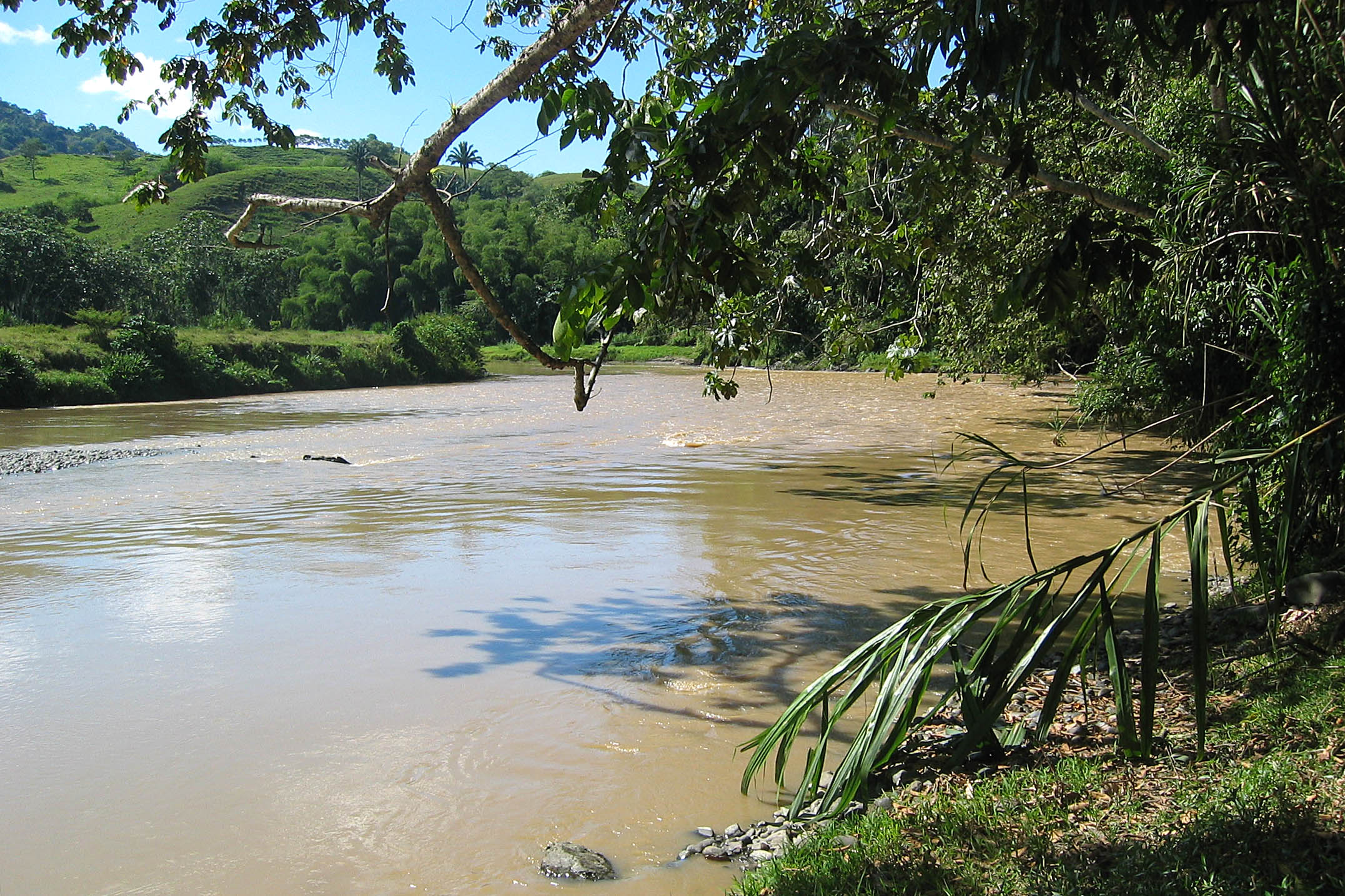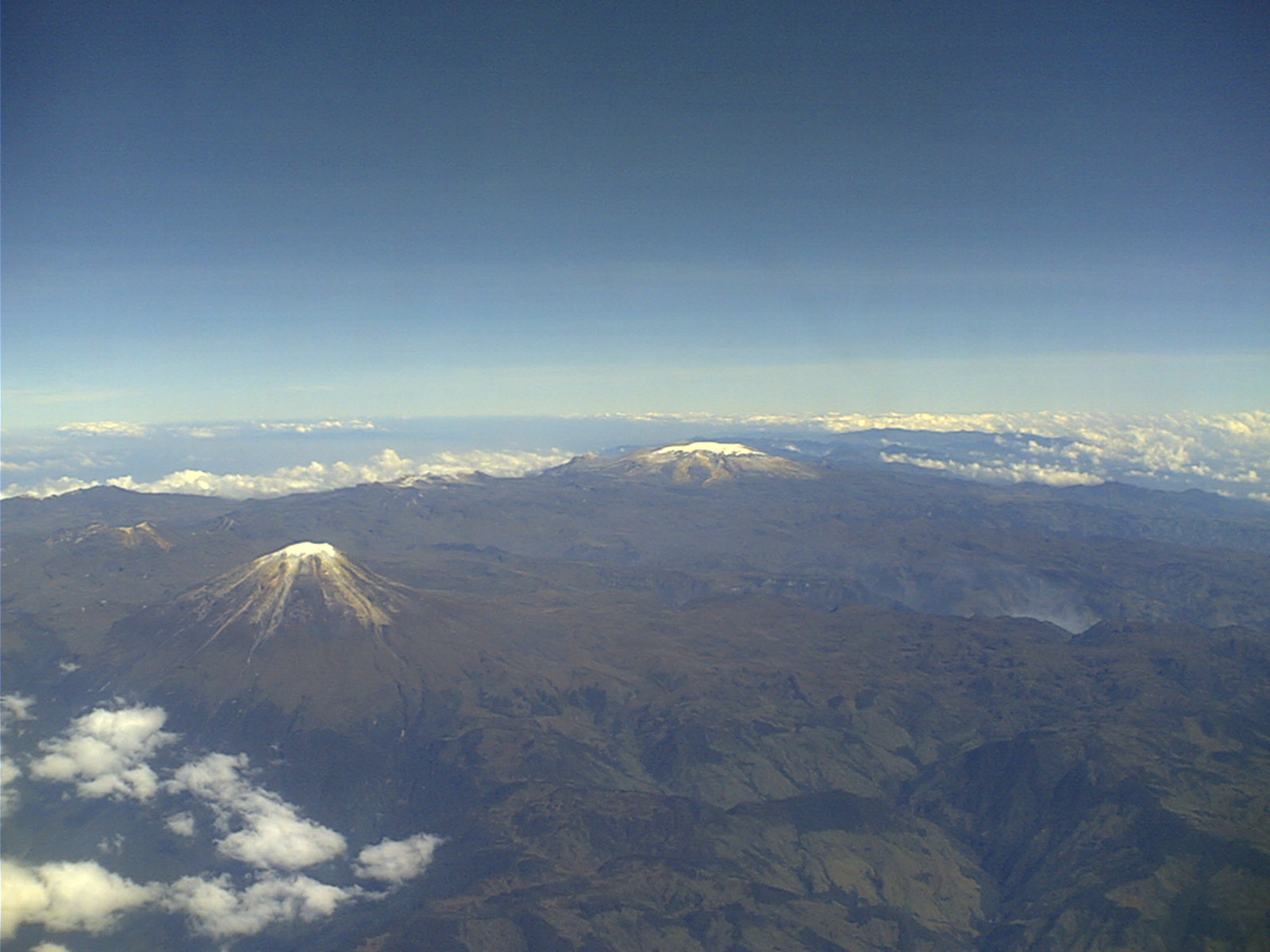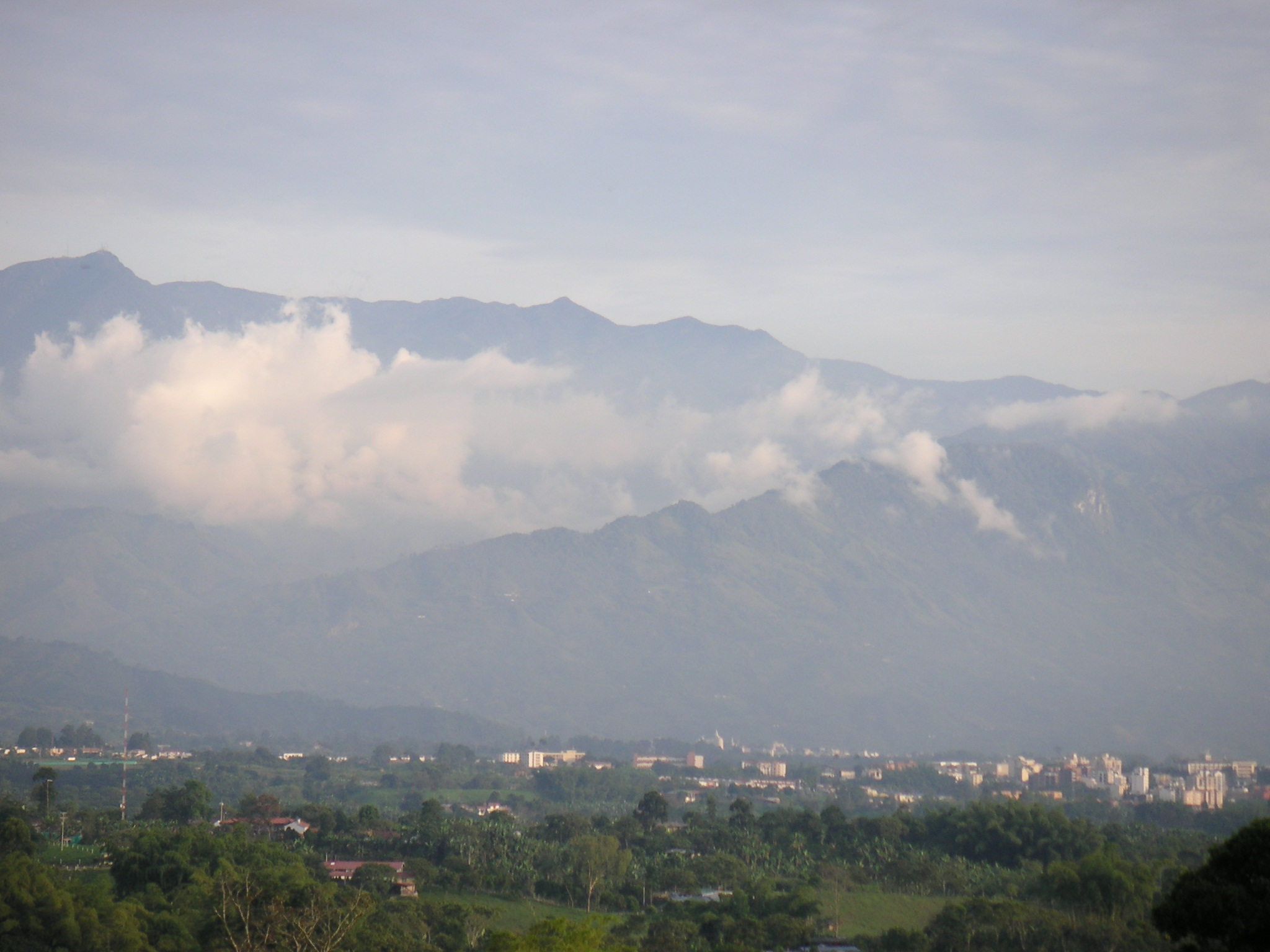|
La Vieja River
La Vieja River ( es, Río La Vieja) is a river in the Colombian departments of Quindío, Valle del Cauca and Risaralda. It is a major tributary of the Cauca River. The river is formed by the joining of the Quindío River and the Barragán River in an area known as the Valle de Maravelez. It has a length of and flows in a northwesterly direction, meeting the Cauca River approximately north of Cartago. Major tributaries include the Roble, Consota, Barbas, Espejo and Pijao rivers. La Vieja forms the limit between the departments of Quindío and Valle del Cauca; it also forms part of the limit between Risaralda and Valle del Cauca. The river basin has an area of and includes the entire department of Quindío. Although Cartago is the only major urban area situated directly on the river, the cities of Armenia and Pereira are located in its watershed. The average river flow is . Recreational use of the river includes the increasingly popular tourist activity ''balsaje'', ... [...More Info...] [...Related Items...] OR: [Wikipedia] [Google] [Baidu] |
Quindío Department
Quindío () is a department of Colombia. It is in the western central region of the country, crossed by the Andes mountains. Its capital is Armenia. It is famous for the quality of the coffee plantations, colorful architecture, benign weather, variety of hotel accommodations and tourist landmarks. This department is located in a strategic area, in the center of the triangle formed by the three main cities of the country: Bogotá, Medellín and Cali. Quindío is the second-smallest Colombian department (0.2% of the national territory) with 12 municipalities. Ethnographically and culturally, it belongs to the Paisa region. History Before the Spanish invasion the entire area was inhabited by the peoples of the Quimbaya civilization until the 10th century B.C. At the time of Spanish conquest the area was inhabited by indigenous people of Carib descent known as the Pijao tribes. The native population was gradually reduced due to slavery, armed confrontations, and massacres du ... [...More Info...] [...Related Items...] OR: [Wikipedia] [Google] [Baidu] |
Colombia
Colombia (, ; ), officially the Republic of Colombia, is a country in South America with insular regions in North America—near Nicaragua's Caribbean coast—as well as in the Pacific Ocean. The Colombian mainland is bordered by the Caribbean Sea to the north, Venezuela to the east and northeast, Brazil to the southeast, Ecuador and Peru to the south and southwest, the Pacific Ocean to the west, and Panama to the northwest. Colombia is divided into 32 departments and the Capital District of Bogotá, the country's largest city. It covers an area of 1,141,748 square kilometers (440,831 sq mi), and has a population of 52 million. Colombia's cultural heritage—including language, religion, cuisine, and art—reflects its history as a Spanish colony, fusing cultural elements brought by immigration from Europe and the Middle East, with those brought by enslaved Africans, as well as with those of the various Amerindian civilizations that predate colonization. Spanish is th ... [...More Info...] [...Related Items...] OR: [Wikipedia] [Google] [Baidu] |
Cauca River
The Cauca River () is a river in Colombia that lies between the Occidental and Central cordilleras. From its headwaters in southwestern Colombia near the city of Popayán, it joins the Magdalena River near Magangue in Bolivar Department, and the combined river eventually flows out into the Caribbean Sea. It has a length of to its junction with the Magdalena, for a total length of . from origin to seamouth. The river is under the supervision of the ''Cauca Regional Corporation'' and the ''Cauca Valley Regional Autonomous Corporation'', and is navigable for above its junction with the Magdalena. File:Rio cauca popayan.JPG File:Salvajina.jpg File:Río Cauca. Puente Anacaro (3). Cartago - Ansermanuevo, Valle, Colombia.JPG File:Río Cauca.JPG File:Puentes en La Pintada 01.jpg File:Puente de Occidente.JPG File:El río Cauca.jpg Environmental issues On November 18, 2007, Colombian newspaper '' El Tiempo'' reported that the river was receiving an average of 500 tons of residual was ... [...More Info...] [...Related Items...] OR: [Wikipedia] [Google] [Baidu] |
Risaralda Department
Risaralda () or "Rizaralde", is a landlocked department of Colombia. It is located in the western central region of the country and part of the Paisa Region. Its capital is Pereira. It was divided from the department of Caldas in 1966. Risaralda is very well known for the high quality of its coffee, and a booming industry: clothes, food, trading of goods and services. The territory is very mountainous and has many kinds of climates in a very small area. Its proximity to harbours such as Goodventure on the Pacific Ocean and to the biggest cities in Colombia – Bogota, Cali, Medellin – makes it a fast-growing economic centre. Geography Risaralda department with an area of , is located in the central sector of the central Andean region west of the country between two major poles of economic development (department of Antioquia in northern and southern Cauca Valley, extending between the central and western Cordillera), which slopes down toward the Río Cauca, a ... [...More Info...] [...Related Items...] OR: [Wikipedia] [Google] [Baidu] |
Quindío River
Quindío River ( es, Río Quindío) is the principal river of the department of Quindío, Colombia. It combines with the Barragán River at the Valle de Maravelez to form La Vieja River, in turn a tributary of the Cauca River. Quindío River Is long. It forms in the mountains east of Salento and flows in a south-westerly direction, passing by the township of Salento and forming the eastern limit of the city of Armenia. Its major tributaries are the Verde River and the Navarco River (these in turn have the tributaries Santo Domingo and Boquerón, respectively). The total watershed including these tributaries is . The average flow at the mouth is . The river is the source of drinking water for the majority of the inhabitants of the department. The continued increase in demand is placing significant pressure on this resource. Additionally, there are contamination problems due to inadequate waste water treatment Wastewater treatment is a process used to remove contaminant ... [...More Info...] [...Related Items...] OR: [Wikipedia] [Google] [Baidu] |
Barragán River
Barragan or Barragán may refer to: * Barragan (surname) * Barragan Luisenbarn, the second espada in the manga ''Bleach'' * ''Barragán'' (Blonde Redhead album), 2014 **"Barragán", the title track from the album * Luis Barragán House and Studio, the former residence of architect Luis Barragán in Mexico City {{disambiguation ... [...More Info...] [...Related Items...] OR: [Wikipedia] [Google] [Baidu] |
Cartago, Colombia
Cartago () is a city in southwestern Colombia, about west of Bogotá. It is in the extreme northern portion of the Valle del Cauca Department. It is located very close to the city of Pereira, about a 20-minute drive. It is the sixth largest city in Valle after Cali, Palmira, Buenaventura, Tuluá and Jamundí. Per the 2018 Colombian census, Cartago's population was 118,803, a decrease from 121,741 per the . Overview Cartago features warm weather, about 30 degrees Celsius (≈86 degrees Fahrenheit) or more on a typical day with 80% dryness. The city is home to multiple farmhouses and farm owners, recreational sites, discos and condos frequented by people coming from Pereira. Education The University of Valle has a branch campus in Cartago. The main Universidad del Valle campus is based in Cali, the department capital. The Cartago branch campus address is located at Calle 10 N° 19–05. Private institutions include the Instituto Técnico Colombiano, INTEC Cartago a ... [...More Info...] [...Related Items...] OR: [Wikipedia] [Google] [Baidu] |
Armenia, Colombia
Armenia () is the capital of Quindio Department. Armenia is a medium-sized city and part of the " coffee axis" along with Pereira and Manizales. It is one of the main centers of the national economy and of the Colombian coffee growing axis. As a result, the historic center of Armenia was named as part of the "Coffee Cultural Landscape" of UNESCO World Heritage Site in 2011. History The city was founded on October 14, 1889, by Jesús María Ocampo, also known as "Tigrero" (translates to "tiger killer") due to his love of hunting jaguars, known locally as tigers. Ocampo came from Anaime, Tolima, looking for shelter in the mountains of Quindío because he was running away from General Gallo. He paid one hundred pesos in gold coins to Antonio Herrera for the land on which to build a fonda, or trade center, not only for himself but also for other colonists who came from Salento, Antioquia, Manizales, and areas surrounding the Quindío River and La Vieja River. Ocampo then proc ... [...More Info...] [...Related Items...] OR: [Wikipedia] [Google] [Baidu] |
Pereira, Colombia
Pereira () is the capital city of the Colombian department of Risaralda. It is located in the foothills of the Andes in a coffee-producing area of Colombia officially known as the " Coffee Axis". Pereira, alongside the rest of the Coffee Axis, form part of UNESCO World Heritage Site known as the "Coffee Cultural Landscape of Colombia"."Colombia green guide Michelin 2012-2013." Michelin. 2012. Accessed at Google Books 29 December 2013. It is the most populated city in the Coffee Axis. Pereira is also part of the Central West Metropolitan Area, which has 709,322 residents and is composed of Pereira and the neighboring cities of Dosquebradas and |
Guadua
''Guadua'' is a Neotropical genus of thorny, clumping bamboo in the grass family, ranging from moderate to very large species. Physically, ''Guadua angustifolia'' is noted for being the largest Neotropical bamboo. The genus is similar to ''Bambusa'' and is sometimes included in that genus. Several animals are, to a various extent, associated with stands of ''Guadua'' bamboo, for example several species of seedeaters, and the Amazon and Atlantic Bamboo Rats. Distribution and habitats The genus can be found in a wide range from northern Mexico and Trinidad to Uruguay, but most of the species are concentrated in the Amazon basin and the Orinoco basin. They usually grow at low altitudes (below 1,500 m), but has been found up to 2,500 m. Its habitats include lowland tropical and lower-montane forest, savannas, Cerrados, gallery forest, and disturbed inter-Andean valley vegetation. Human use From a utilitarian perspective, ''Guadua'' is the most important American bamboo. Due to ... [...More Info...] [...Related Items...] OR: [Wikipedia] [Google] [Baidu] |




